Climate adaptation and building peace
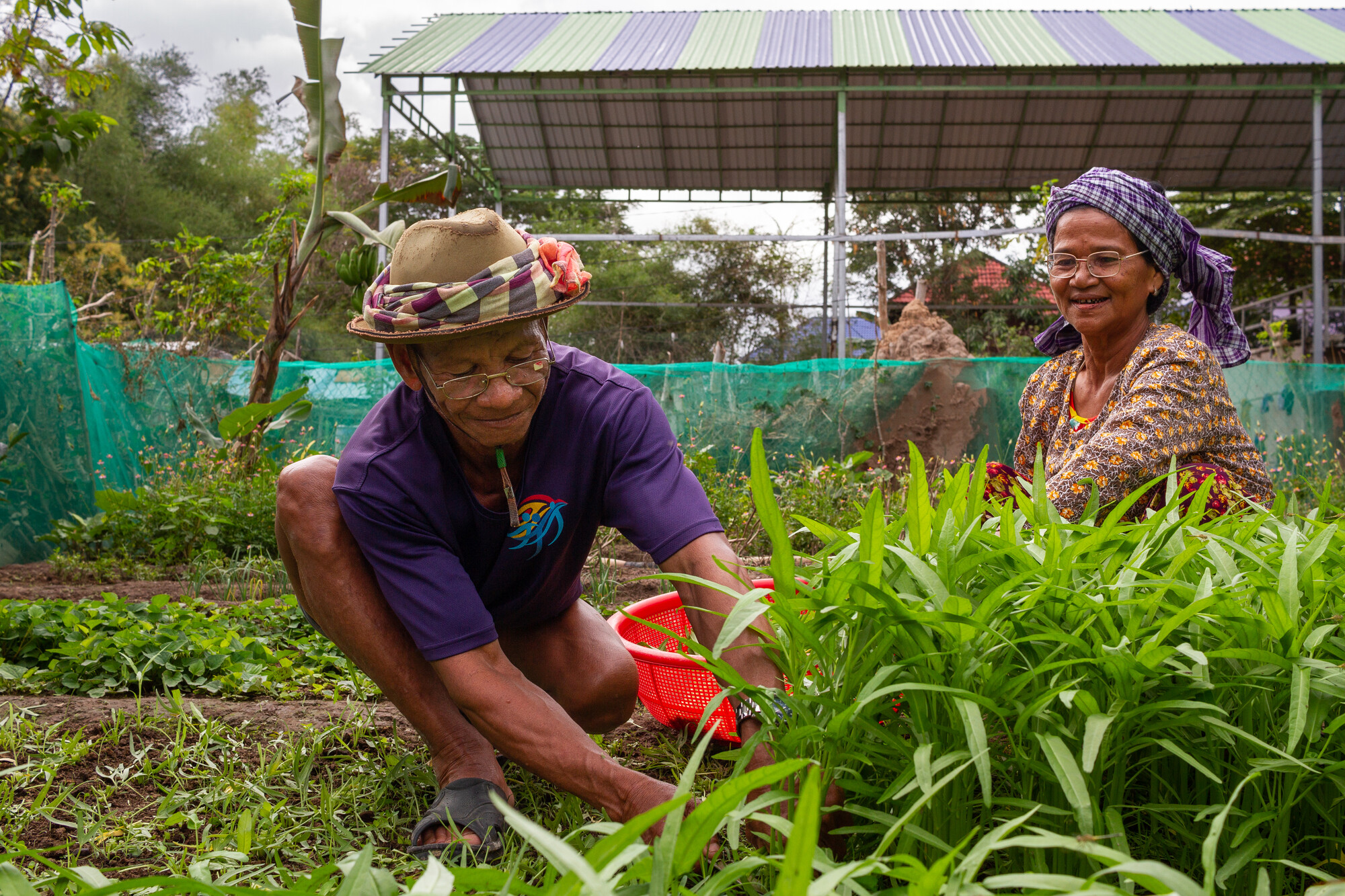
“Climate change doesn’t just affect my family, it affects my whole community,” says Rath Morn, a farmer in Cambodia’s Prey Veng province.
When Rath, 67, was growing up, farmers could count on dry seasons mild enough that lakes never completely ran out of water. Then rain would fall steadily at predictable times, providing irrigation for rice and other crops.
In recent years, however, scorching temperatures have dried out water sources, which can be a death sentence for both crops and animals. Rainy seasons now bring storms that beat down or drown crops.
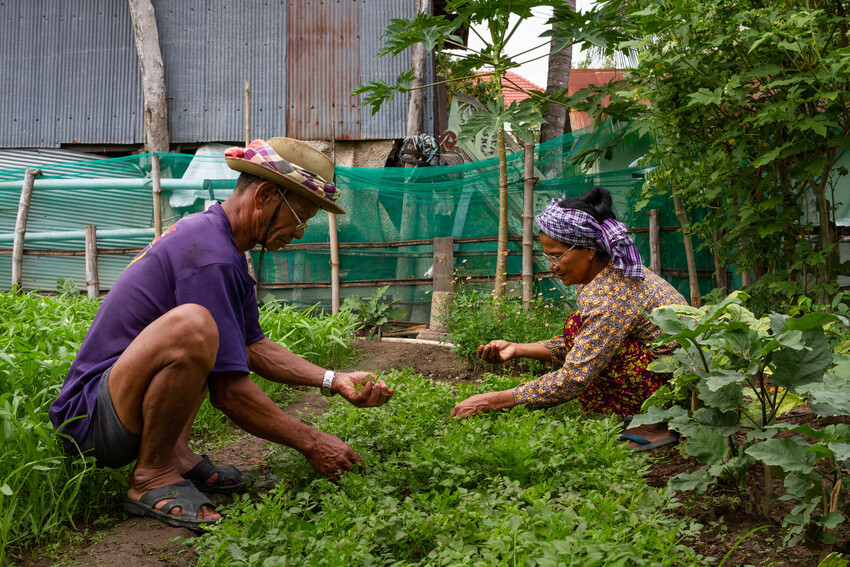
And many people, including Rath, have been forced to migrate for work so they can support their families.
“There is not enough income,” he says. There is migrant labor or even crossing the border into other countries. If people don’t do so, we cannot deal with the problems in our family.”
That’s a dynamic that not only touches the life of one family but can tear away the peace, wholeness and stability of entire communities.
Because of new agricultural techniques taught through an MCC partner that help farmers cope with the impacts of climate change, Rath and some of his neighbors earn enough income to remain at home. But with the climate changes that continue to add up, this won’t always be enough.
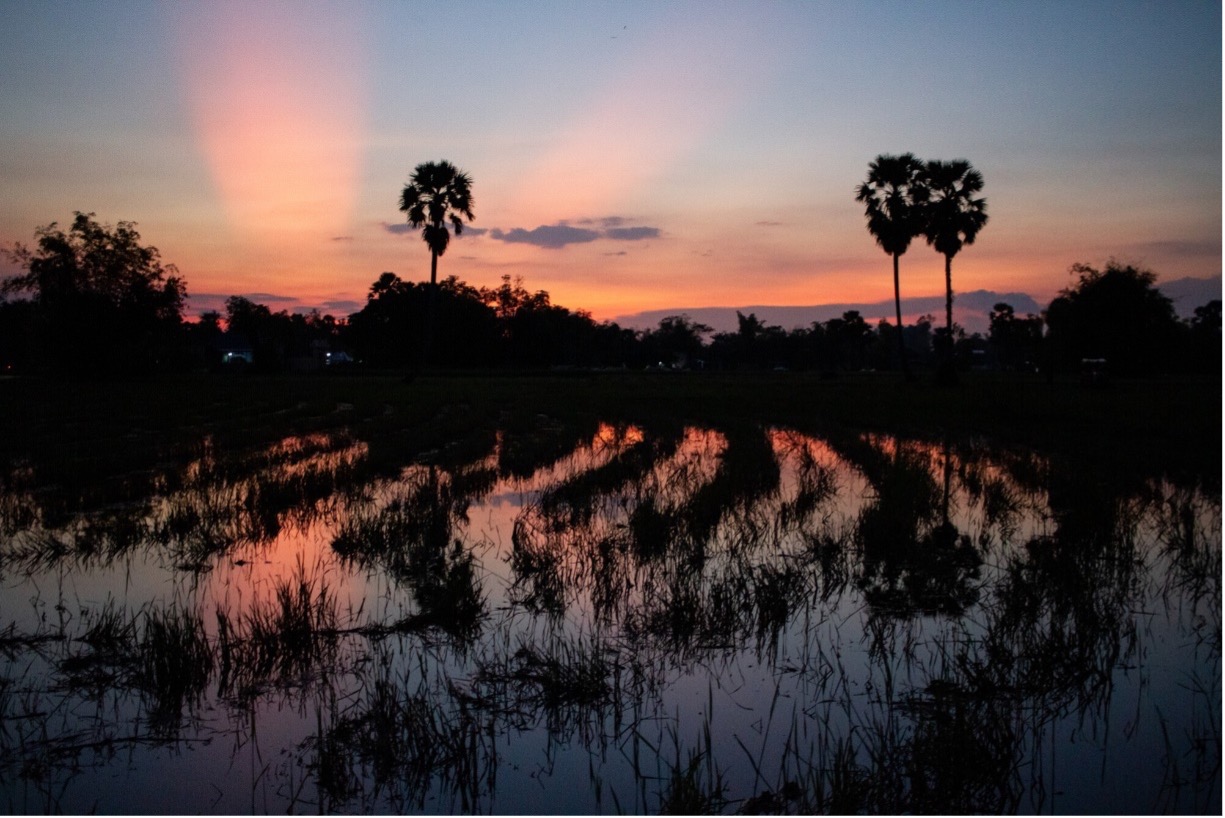
From nourished deltas to economic devastation
For thousands of years, Cambodian society flourished around the rhythmic cycles of rainy and dry seasons.
Annual monsoon rains and the predictable overflow of the Mekong River brought offerings of rich silt and ample water, enriching rice crops that sustained generations of Cambodian families.
In the rural parts of the Prey Veng province, stretching out from the eastern bank of the Mekong River, this is not the kind of wealth that builds mansions or fuels the finance industry, but families — generation after generation — were able to grow or fish for what they needed to survive.
“Back then, there were abundant fish and the lakes never completely dried out. There were many crops that we could grow for our family to eat and to sell the excess. It was enough that we didn’t lack anything,” Rath remembers of his childhood in Sampor village (which means “bountiful” in Khmer), in Prey Totueng commune, Me Sang district, Prey Veng province.
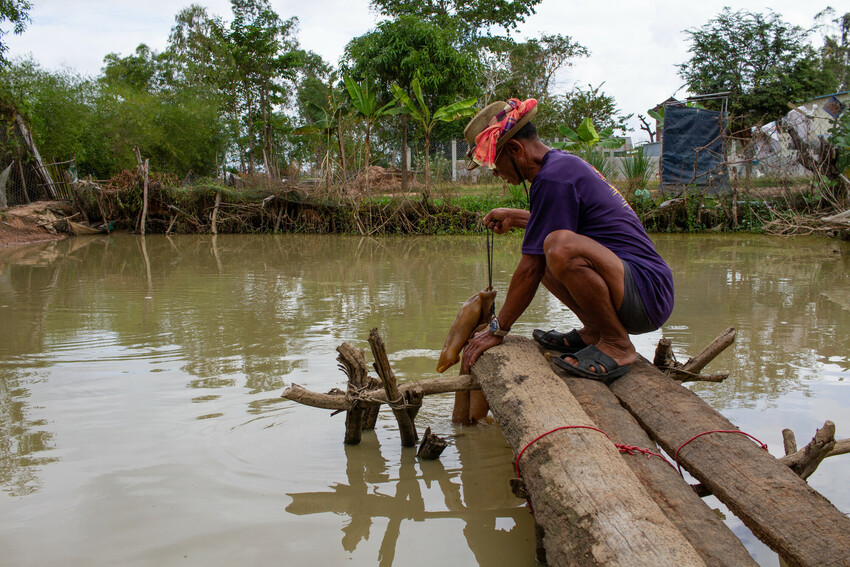
But in recent decades, the certainty that families could depend on first faded, then disappeared.
“Climate change has disrupted seasonal weather patterns, causing the length of the dry season to increase and intensifying the previously stable monsoon rains of the rainy season,” says Tes Sopheat, executive director of MCC partner Organization to Develop Our Villages (ODOV), which works with farmers in this region of Cambodia.
Some years now, certain areas in Me Sang may receive no rain at all, causing drought, while other areas are deluged with rain, generating destructive floods.
The cost is especially high in the Me Sang district because most of its population is dependent on rice production. A two-week drought during the rainy season can dry out and kill a rice crop. Alternatively, a few days of heavy rain in the dry season can ruin a rice harvest by spreading mold and mildew.
It’s easy to think in literal terms of what one flood swept away or the crops taken in a drought, but the reality is that one loss most often leads to another as families grapple for ways to survive.
“Climate change risks are becoming more complex and difficult to manage, with risks overlapping and amplifying each other,” says Amy Martens, MCC’s humanitarian assistance coordinator.
Here’s how that looks in Prey Veng province.
As farmers lose income from rice cultivation, they fall into debt to pay for fertilizers, seeds, equipment rentals and other expenses. With the increase in temperatures, farmers report an explosion in diseases among livestock like pigs and poultry. Irrigation canals and natural lakes have become shallow or have dried up completely leading to devastating effects on the fish population that many households once relied on to supplement their diet and income.
And that’s not all.
“As climate has destabilized seasonal rains, farmers have turned to pumping irrigation water from the groundwater table, accelerating the depletion of underground water as recharge falls far behind demand,” Sopheat says.
And sometimes strategies to help communities adapt to climate change have ripple effects in other parts of the country or even across borders, notes Charles Conklin, who, with his wife Crystal, serve as MCC representatives in Cambodia.
For example, dams built on the Mekong River to provide hydroelectric power and irrigation have disrupted the flooding needed for rice farmers downstream and devastated fish populations. When farmers are forced to adapt to one challenge after another, it doesn’t just affect their crops. It means they end up making choices that can leave them in debt for years to come.

Falling income, rising debt
From the time she was young, Chhin Ya has lived in Samrong Veal village in Prey Veng’s Me Sang district.
“Back then, all of the farmers, and my family too, grew rice irrigated only by the seasonal rains,” says Chhin, now 50.
The yield that her parents were able to grow on .6 hectares (1.48 acres) of land provided the family with rice to eat all year round. Her parents, she stresses, had no debt during this time.
Chhin was not that fortunate.
When drought struck the land in the Me Sang district where she and her husband work to sustain their family, they had no water to irrigate and their vegetables perished. The rice plants withered and dried; eventually, they were only good to be cut and fed to cows. The increased heat led to more animals getting diseases and infections. Some animals died simply because the temperature was so high.
The family suffered from food shortages almost year-round. They began to borrow money from neighbors to buy food or trade their labor for food, sometimes working to harvest rice for other people or washing dishes at weddings and festivals in nearby villages.
None of it was enough. They fell deeper into debt because of farming expenses like buying fertilizers, hiring a tractor to plough or purchasing animal feed.
Chhin’s daughter dropped out of school and migrated to the urban sprawl of Cambodia’s capital, Phnom Penh, to labor in a garment factory, hoping to earn money that would help support the family and repay their debts. Her husband left home to find work outside the district, leaving Chhin alone to cultivate the land and handle the responsibilities of the household.
This story — of climate change-related losses that trigger a cycle of debt, of family members who migrate because of that debt — is one repeated over and over in rural Cambodia.
Many farmers end up taking out loans with high interest rates and get trapped in cycles of debt, increasing the desperation and tensions in families and communities, Conklin says. The problem is severe enough that around 167,000 Cambodians have sold their ancestral land to pay off microfinance debt over the last five years.
Migration – and a new world of risks
When families can no longer make ends meet, someone — a husband, a wife, a daughter, a son — often leaves to find work in a more urban area or even in another country.
Cambodia, like much of Southeast Asia, is experiencing a boon in construction. That can provide reliable work for farmers accustomed to hard manual labor.
However, Conklin notes, there are few physical safety measures implemented and it’s rare for compensation to be provided after an accident. Additionally, many illicit businesses target construction workers after payday, encouraging them to spend their money on prostitution, gambling or drugs instead of sending it home.
And migration isn’t only hard on those who leave. It has an impact that ripples through families and communities.
In particular, Conklin notes that MCC’s work in rural schools has shown that children who are left behind in the village often end up passed from household to household and are at a higher risk for neglect or abuse. Children who migrate with their parents often end up working as well and missing out on years of education.
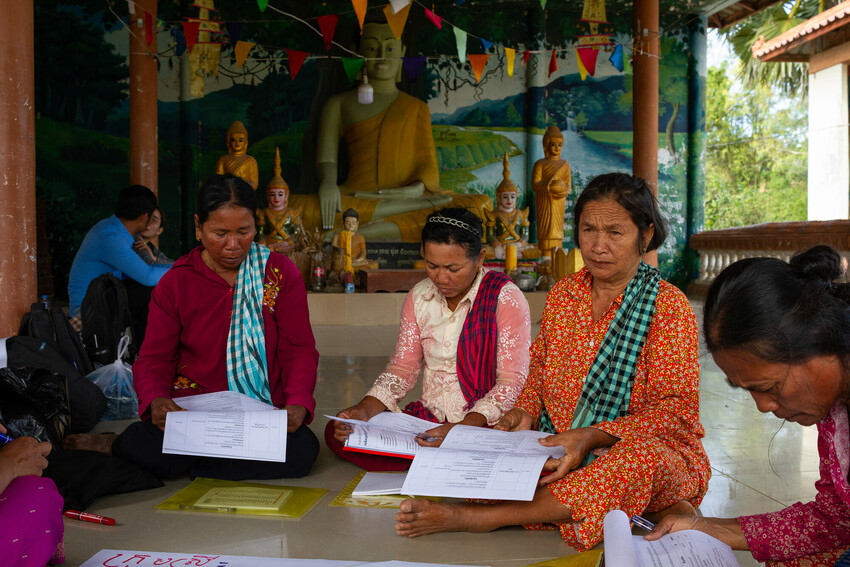
Rising tensions, a threat to stability
In short, the threats from climate change are stretching the whole fabric of society, and that triggers a risk to peace and stability, especially in places like Cambodia.
Cambodia is only 24 years removed from decades of war, Conklin stresses. “The country’s traditional village-level systems of conflict transformation and mediation were largely eradicated,” he notes. “This has left rural communities vulnerable to conflict escalation around food and income insecurity.
Untreated trauma and transgenerational trauma hinder attempts by Cambodians to come together to respond to challenges like climate change and instead result in them falling into infighting or, more often, disengaging from the community,” Conklin says.
This is a reality today — as well as a risk that could continue to grow as the impacts of climate change get worse.
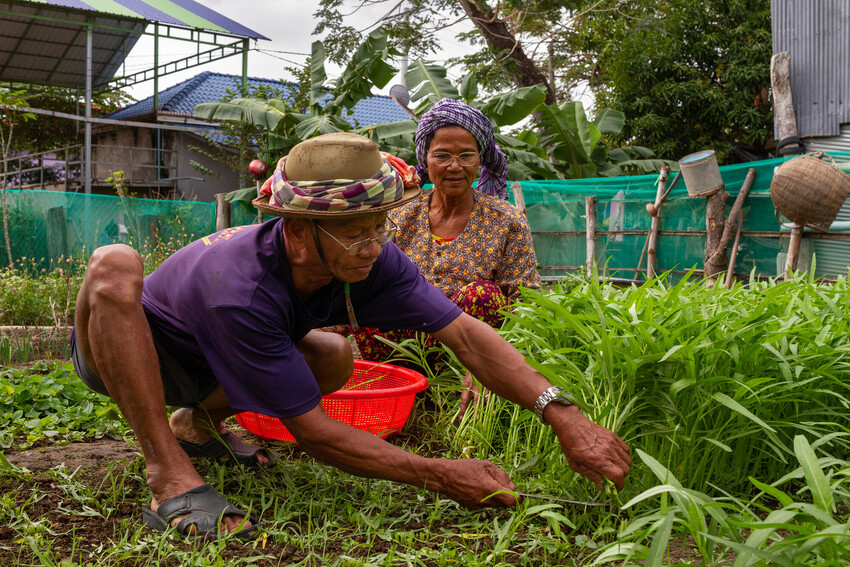
Addressing climate change, working for peace
In response to these challenges, MCC and local Cambodian partners are supporting community-based initiatives that not only give farmers new chances to improve their livelihoods but also work at peace and cohesion in their villages.
In Kratie province, for instance, one farmer wouldn’t let his neighbors bring livestock into his elevated field during extreme flooding and the animals drowned. Afterward, MCC partner Cambodia Rural Development Team worked with the village on disaster mapping and developing a village-wide plan on how to respond to various environmental emergencies, including pre-approval to bring livestock to high ground during flooding.
MCC supports interethnic peacebuilding initiatives through partners like Women Peace Makers and has a long history of supporting agricultural cooperatives that bring together farmers, including those from downstream and upstream communities.
Through the work of ODOV, farmers like Rath and Chhin are learning to establish and care for fishponds that not only provide income from selling fish but also water to irrigate gardens.
They are also discovering new techniques for raising poultry and keeping the birds healthy both in dry and rainy seasons.
“We share and learn together with others,” Rath says, thanking ODOV. “They help us a lot in the community and in the family to understand, so that we can learn and apply the new techniques in practice and improve on raising animals and growing crops.”
That is sparking changes that go far beyond economics.
“Addressing climate change means more peace because in my family people live peacefully and there’s no separation from the family by going away to do migrant labor,” he says. “In the community, people share with each other and help one another. I see improvement in the community.”
Are you wondering what kind of difference fishponds and gardens can make in communities where the weather itself is changing? Some. Enough that farmers are willing to change their practices to try. Enough that Chhin’s husband no longer has to migrate. Enough that Rath not only remains home himself but sees changes in other families in his community.
More help is needed for Cambodia, to be sure. And the challenges and complexities are steep. Join us and get involved in climate action for peace to reduce the impacts of climate change in places like Cambodia and to help communities thrive and live in peace.

